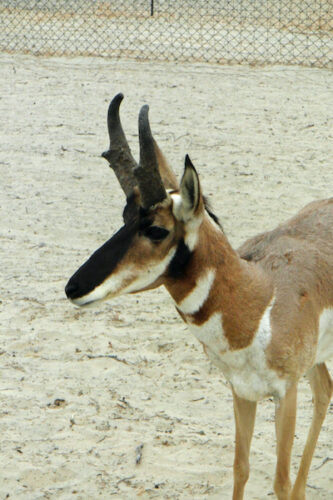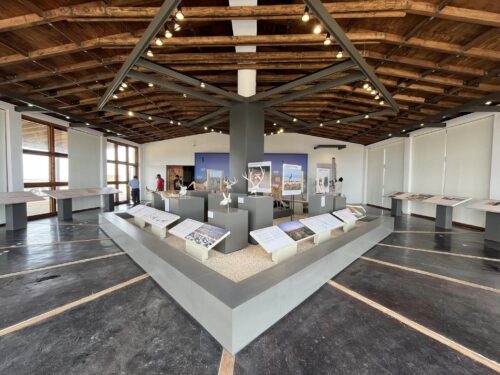
The berrendo (pronghorn) were once abundant in Baja. They were prolific throughout the central desert and have always been an important part of the ecosystem. They were so important to the indigenous people of the region that they are featured in many of the Baja cave paintings from up to 5,000 years ago. But the berrendo now only exist within the confines of the Vizcaíno Biosphere Reserve and are in critical danger of going extinct.
The Baja Berrendo
The berrendo found in Baja are the Peninsula Pronghorn, one of five subspecies that are found exclusively in North America. Three of the subspecies are located in Mexico, but the Peninsular Pronghorn is the only subspecies endemic to the country and specifically to the Baja California peninsula.
The berrendo is the fastest land mammal in the Western Hemisphere and the second-fastest land mammal in the world, right after the cheetah. They can run at speeds up to 60 mph and can sustain those high speeds much longer than cheetahs can. They use their running skills to traverse many miles each day in search of food in the harsh desert landscape. They are also able to survive by getting water from the plants that they eat and dew that collects on the plants in the mornings.
They have an incredible metabolism that allows them to regulate their own internal temperatures. They can raise their internal temperature to 102 degrees when it’s hot, and lower it to 95 degrees when it’s cold, to survive in the extreme temperatures of the desert. Their fur is made up of long, thick, hollow hairs and their subcutaneous muscles move the hairs to dissipate body heat and to shade itself.
The berrendo are the largest animal in their environment and play a vital role in the ecosystem of the desert, breaking ground with their hooves as they run and spreading vegetation through the plants that they eat and excrete. They have an extraordinary 280 degree vision field and they can see movement up to 6,000 meters away.
Unfortunately, hunting, agriculture, and cattle ranching (along with livestock fences) eventually led to a big decline of the Baja berrendo.
The Berrrendo Station and Recovery Program
In 1997, it was estimated that there were only about 170 berrendo left. Local communities, Espacios Naturales (a non-profit that works to protect and conserve the natural wealth of Mexico), and the Mexican Secretariat of Environment and Natural Resources (SEMARNAT) came together to form the “Peninsular Pronghorn Recovery Program.” Their initial effort was focused on increasing the number of pronghorn through a management unit called the Berrendo Station. Once they reached 300 new berrendo births, they moved to a second stage of the program where the pronghorn live in a condition similar to their wild state in area of over 55,000 acres that’s enclosed to keep domestic livestock out—avoiding competition for scarce food and to minimize the transmission of disease that could destroy the berrendo population.
Since 2011, when there began being a steady rate of 60 new berrendo births annually, the project has been in a third stage. Thie stage provides breeding stock of pronghorns to the surrounding communities with the intention of recovering a large corridor that will allow the free movement for the animals in the areas where they historically thrived. The conservation area now has an additional more than 75,000 acres, extending up into the state of Baja California.

Visiting the Berrendo
You can visit the berrendo just north of Guerrero Negro at the Berrendo Station where the animals will come up near the fence and visitors can observe the animals. New to the station as of 2022, there’s now a Berrendo museum, the Museo del Berrendo Peninsular (MUBE) at the station. The small museum gives a wonderful history and insight to the animals.
To get to the Berrendo Station, there will be a turn off going east from Highway Mexico 1 at Km. 123, about 2 miles north of the giant Eagle sculpture north of the town of Guerrero Negro. Follow the dirt road for just over a mile to reach the station and museum.
Facebook Page: https://www.facebook.com/peninsularpronghorn
Website: https://berrendo.endesu.org.mx
Tel.: 011-52-612-140-3166
Museum closed on Wednesdays
